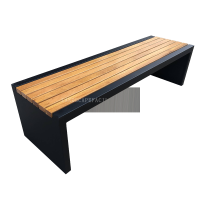Welcome to the website for landscape facilities products and knowledge.
How does the bin’s design accommodate users who may have visual impairments?
For individuals with visual impairments, everyday tasks like disposing of waste can pose challenges. Modern accessible bin designs address these needs through thoughtful features that enhance usability and independence.
1. Tactile Indicators – Raised symbols, Braille labels, or textured surfaces help users identify recycling, compost, and general waste compartments by touch.
2. High-Contrast Colors – Bold color combinations (e.g., black lids on yellow bins) improve visibility for those with partial sight, ensuring clear differentiation between sections.
3. Auditory Feedback – Some bins incorporate sound cues (e.g., a click or beep) to confirm lid closure or successful disposal, aiding navigation.
4. Ergonomic Openings – Wide, easy-to-locate openings with smooth mechanisms (like pedal-operated lids) reduce reliance on visual cues.
5. Consistent Placement – Standardized positioning in public spaces allows users to build spatial memory for predictable waste disposal.
By integrating these inclusive features, designers empower visually impaired individuals to participate in sustainable practices confidently. Future innovations may include smart sensors or voice-guided systems to further bridge accessibility gaps.
Related search:

Recommendation
Modern Stainless Steel Begonia Wood Park Chair Outdoor Courtyard Leisure Sun Protection Bench Long Seat